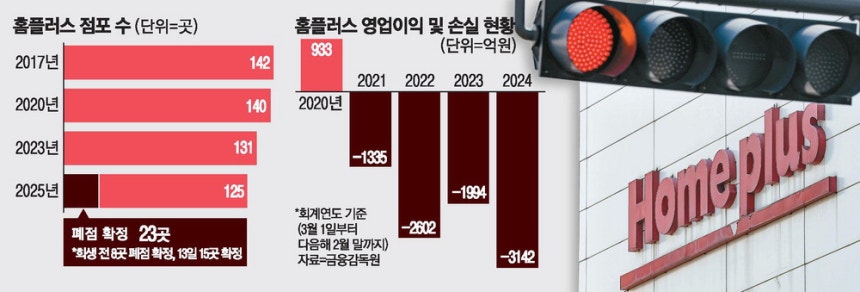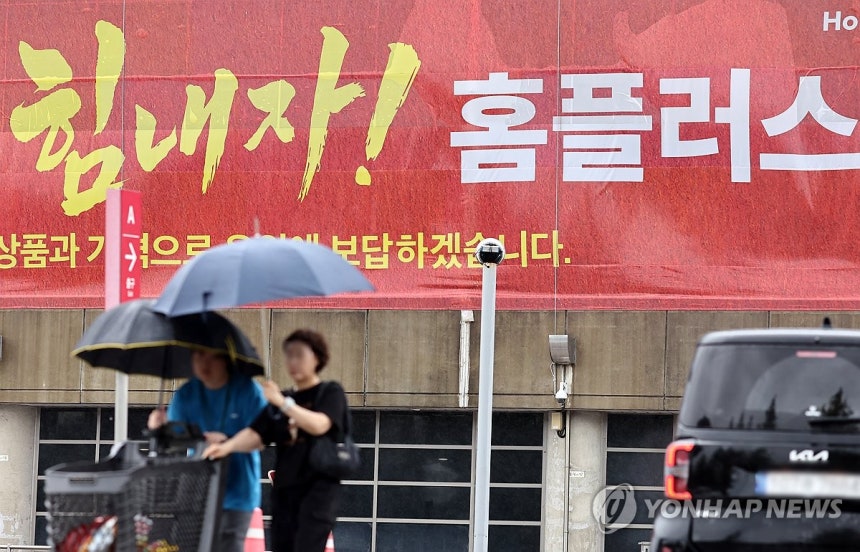Table of Contents
- Impact of Homeplus store closures on the local business area: What to check?
- Overview of the Homeplus closure targets and schedule
- Why close now: The triple burden of rent, cash flow, and policy effects
- Signals for Busan and Ulsan: Alternative shopping routes and restructuring of local businesses
- Union stance and M&A variables
- Consumer checklist: Things to check before business closure
- Local customers and businesses feel the 'impact'... Future watch points
- Frequently Asked Questions (FAQ)
Impact of Homeplus store closures on the local business area: What to check?

Homeplus, currently undergoing corporate recovery procedures, announced the sequential closure of 15 stores due to failed rent adjustments.
The Jangrim and Gamman stores in Busan are included in this closure list, leading to expected inconveniences for nearby businesses and consumers.
This article aims to comprehensively organize the closure list, its background, the impacts on Busan and Ulsan, future variables, and a checklist for consumers to note.
Overview of the Homeplus closure targets and schedule

The main content of this action is to gradually close 15 stores experiencing difficulties in rent adjustment.
The stores include: Siheung, Gayang, Ilsan, Gyeyang, Ansan Gojan, Suwon Woncheon, Hwaseong Dongtan, Cheonan Sinbang, Daejeon Munhwa, Jeonju Wansan, Daegu Dongchon, and Busan's Jangrim and Gamman stores, as well as Ulsan's Buk-gu and Nam-gu stores.
In particular, the inclusion of stores in Busan and Ulsan is expected to have a significant impact in the Yeongnam region. The closures are scheduled to proceed sequentially by next year, making it likely that stores will close one after another in the respective areas.
Why close now: The triple burden of rent, cash flow, and policy effects

Homeplus had negotiated a 30-50% rent reduction for 68 leased stores, but negotiations fell through for some stores, ultimately leading to closure decisions.
Since beginning recovery proceedings, trust has diminished, causing a shortening of vendor settlement cycles and reduced transaction limits. This has put greater pressure on cash flow, and the exclusion of large supermarkets from places where consumer coupons can be used has exacerbated the decline in sales. These factors have significantly impacted management deterioration.
Signals for Busan and Ulsan: Alternative shopping routes and restructuring of local businesses

Several large supermarkets in Busan and Ulsan will close. This includes the Jangrim and Gamman stores in Busan, as well as the Buk-gu and Nam-gu stores in Ulsan. Jangrim and Gamman areas have high demand for bulk purchases every weekend, and the large supermarkets have played a central role in logistics. Thus, finding nearby alternative routes will become an important task.
In the short term, consumer demand may disperse through warehouse-type stores, supermarkets, and online delivery, but with the decrease in the number of large offline stores, sales correlation with nearby small businesses may also be negatively impacted.
The total number of stores is expected to drop from 125 to 102, and while 11 stores are mentioned as potentially eligible to reopen, their conditions and timing remain uncertain.
Union stance and M&A variables

The company is currently in a "critical crisis" situation and has decided to implement 'voluntary unpaid leave' for all headquarters employees and extend the partial salary return of executives.
The union strongly opposes the closures, stating, "The brand value exists in all stores; closure is equivalent to abandoning the brand."
The company is looking for potential acquirers to obtain M&A approval, but whether specific candidates will emerge remains an important variable in the normalization process ahead.
Consumer checklist: Things to check before business closure

It is essential to check membership points, gift cards, and conditions for various accumulations and refunds. Since the closure schedule may vary for each store, it is important to check the locations for exchanges and A/S through customer service in advance.
To enhance shopping efficiency, it is recommended to use nearby large supermarkets, warehouse-type stores, or online shopping for dispersed purchases. During clearance sales that may occur before closure, it is crucial to closely examine expiration dates and return conditions.
Local customers and businesses feel the 'impact'... Future watch points

As rent negotiations collapsed, cash flow worsened, leading to selective store closures.
The exit of the Jangrim and Gamman stores in Busan, as well as the Buk-gu and Nam-gu stores in Ulsan, will have immediate effects on the grocery ecosystem and weekend bulk purchasing patterns in these areas.
In the short term, other alternative channels will fill this gap, but medium- to long-term normalization will depend on the success of mergers and acquisitions (M&A) and the restructuring of leasing agreements.
Consumers should frequently check the closure schedules and the disappearance of benefits, while local businesses will need to hasten discussions on space reuse and retail structural changes.
#BusanHomeplus, #JangrimStore, #GammanStore, #HomeplusClosure, #HomeplusCorporateRecovery, #RentAdjustment, #UnpaidLeave, #SiheungStore, #GayangStore, #IlsanStore, #GyeyangStore, #AnsanGojanStore, #SuwonWoncheonStore, #HwaseongDongtanStore, #CheonanSinbangStore, #DaejeonMunhwaStore, #JeonjuWansanStore, #DaeguDongchonStore, #UlsanBukguStore, #UlsanNamguStore, #HypermarketClosure, #RetailTrends, #OfflineDistribution, #M, #&A, #ConsumerCoupons, #BusanBusinessArea, #UlsanBusinessArea, #LocalEconomy, #DistributionIndustryNews
Frequently Asked Questions (FAQ)
Q. Which stores is Homeplus closing?
Homeplus will sequentially close 15 stores that failed rent adjustments.
The stores targeted for closure include Siheung, Gayang, Ilsan, Gyeyang, Ansan Gojan, Suwon Woncheon, Hwaseong Dongtan, Cheonan Sinbang, Daejeon Munhwa, Jeonju Wansan, Daegu Dongchon, Busan's Jangrim and Gamman stores, and Ulsan's Buk-gu and Nam-gu stores. In particular, four stores in Busan and Ulsan are included, which are expected to have a significant impact on the Yeongnam business area. Closures are planned to occur sequentially by next year.
Q. What is the background for Homeplus's decision to close stores?
The failure of rent negotiations and worsened cash flow contributed to the decision to close stores.
Homeplus had conducted negotiations for a 30-50% rent reduction with 68 stores, but some negotiations fell through. The ongoing corporate recovery process and the decline in brand trust have led to shorter settlement cycles from suppliers and reduced transaction limits, putting pressure on cash flow. The exclusion of large supermarkets from consumer coupon usage has also worsened sales. These factors of rent, cash flow, and policy effects are the main reasons for the closures.
Q. What impact will the closure of Homeplus stores in Busan and Ulsan have on local business areas?
The closures in Busan and Ulsan will prompt changes in bulk purchasing routes and restructuring of local businesses.
The closures of the Jangrim and Gamman stores in Busan, as well as the Buk-gu and Nam-gu stores in Ulsan, will directly affect weekend bulk purchasing demand. Since large supermarkets played a logistical role, nearby consumers will now need to find alternative shopping routes. In the short term, consumer demand will likely disperse through warehouse-type stores, supermarkets, and online delivery, but the decrease in large offline stores may also negatively impact sales for surrounding small businesses. The total number of stores is expected to decrease from 125 to 102, and a restructuring of retail structures in local business areas is anticipated.
Q. What should consumers be cautious of before the closure of Homeplus stores?
It is essential to confirm the validity of memberships and gift cards, along with checking the locations for exchanges and A/S.
Consumers should carefully check their membership points, gift cards, reward points, and refund conditions before the closures. Since the closure dates may differ from store to store, it’s important to confirm the locations for exchanges and A/S through customer service in advance. To enhance shopping efficiency, it is recommended to use nearby large supermarkets, warehouse stores, or online shopping for dispersed purchases. During clearance sales, it’s also important to closely observe expiration dates and return conditions.
Q. How do the positions of the Homeplus management and union differ?
Management is implementing unpaid leave and salary reductions for executives to overcome the crisis, while the union opposes the closures.
The company has stated that it is currently in a critical crisis and has decided to implement voluntary unpaid leave for employees at headquarters and extend the salary return for executives. Meanwhile, the union emphasizes the importance of maintaining brand value and strongly opposes the closures, viewing them as abandonment of the brand. M&A initiatives for management normalization also remain a key variable.
Q. How will the local business area change after the closure of Homeplus stores?
Short-term gaps will be filled by alternative channels, while medium- to long-term changes will depend on M&A and lease structure reorganizations.
The closure of prominent stores in Busan and Ulsan will bring immediate changes to the grocery ecosystem. In the short term, alternative channels such as warehouse stores, supermarkets, and online deliveries will help fill these gaps, but medium- to long-term recovery will largely depend on the success of M&A and the restructuring of lease arrangements. Local businesses and consumers should frequently check closure schedules and benefit expirations while preparing for space reuse and retail structural changes.